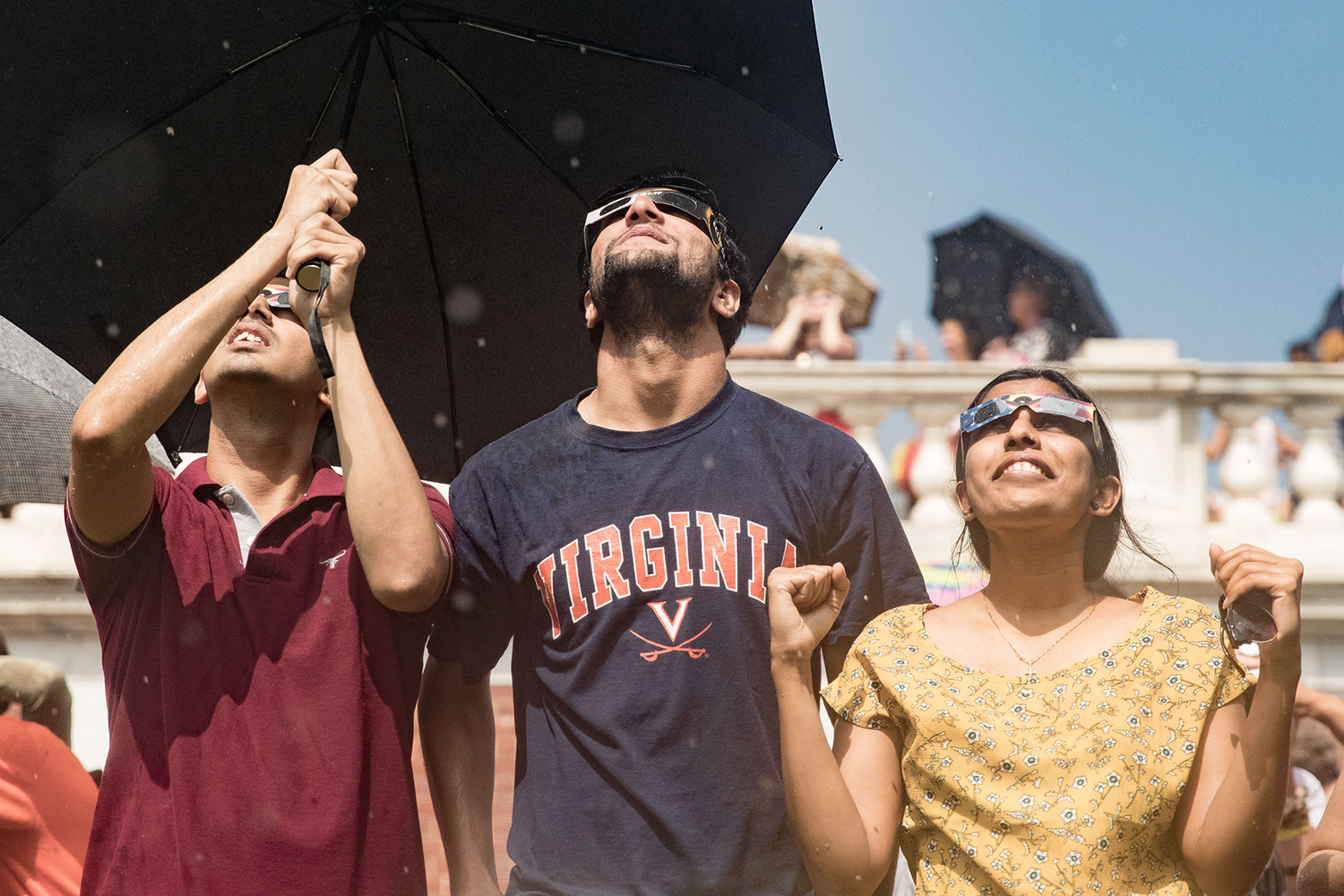The last time a total solar eclipse was visible in the continental United States it was 1979, and it was a much less exciting event for the University of Virginia. Charlottesville was far outside the path of totality for that eclipse – the line across the Earth’s surface where the moon fully blocks the sun.
But on Monday – the day before fall semester classes begin – UVA was much closer to the celestial action. While it wasn’t on the path of totality, the University was close enough that viewers were able to catch a partial eclipse from vantage points on Grounds. The Society of Physics Students and the Astronomy Club held a community viewing event on the Lawn.
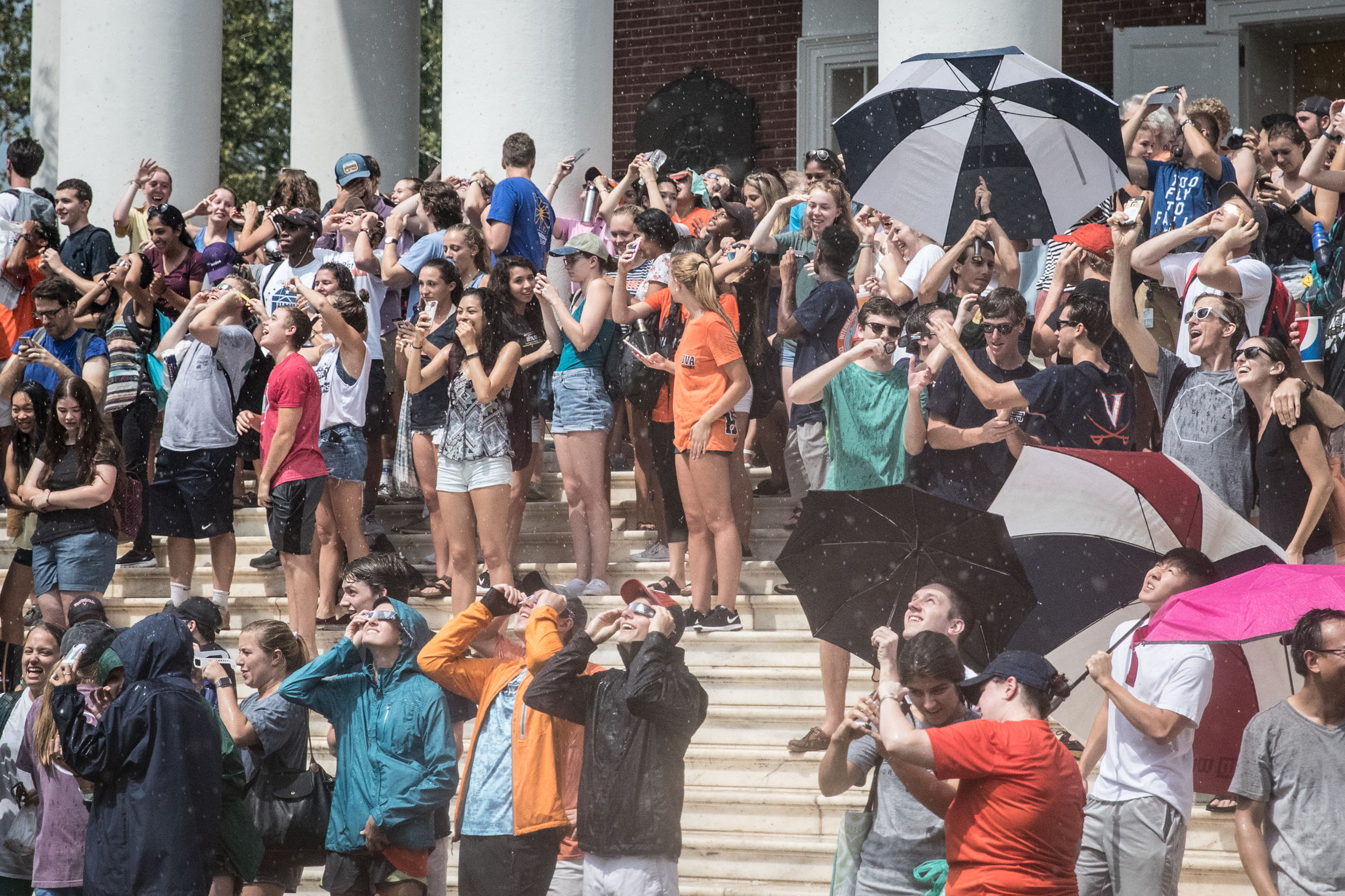
“This is entirely just for the student body, so everyone can experience it because it’s a very rare event,” said Alison Lee, a third-year double major in astronomy and poetry.
Lee and her fellow students instructed a long line of eager students on how to use an H-alpha telescope and a projection telescope to safely view the eclipse. The H-alpha filters the light in such a way that it makes it safe to look at the sun, while the projection telescope projected a reflected image for students to view.
“It looks pretty cool through the telescope. It’s looks pretty red,” said Emmanuel Ndumbe, a first-year student studying systems engineering.
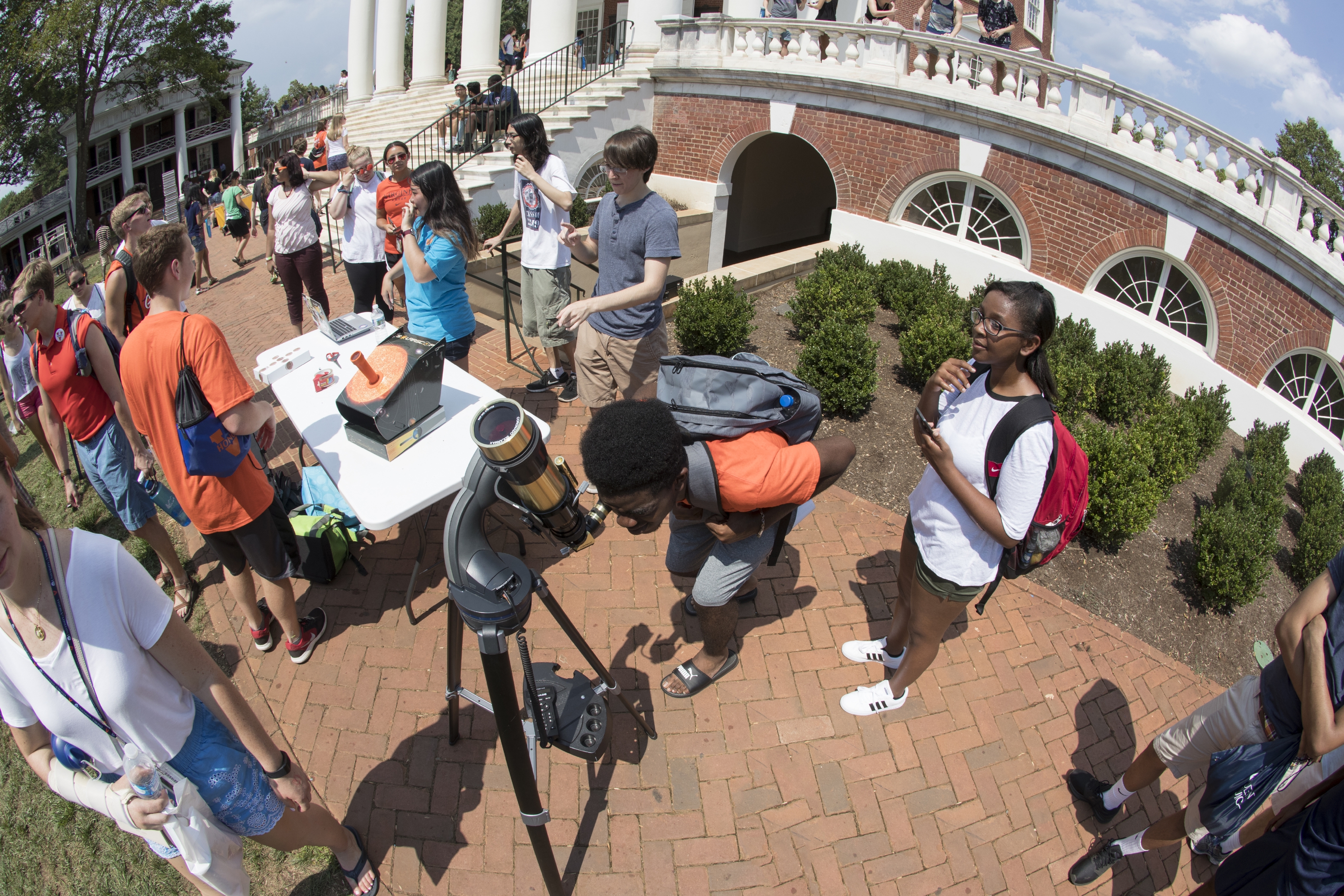
First-year student Emmanuel Ndumbe peers through the H-alpha telescope. (Photo by Dan Addison, University Communications)
Ndumbe and his fellow students were part of a festive atmosphere on the Lawn, with many students enjoying free popsicles as they witnessed the steady progress of the moon.
Astronomy graduate students Allison Matthews and Andrew Burkhardt prepared to take in the eclipse with special glasses they ordered for the event. Both agreed that while it wasn’t necessarily a big research event for them – Matthews’ research focuses on star formation, and Burkhardt studies astrochemistry – it was a fascinating thing for anyone to witness.
“It was actually during an eclipse in the early 1900s that astronomers were able to prove Einstein’s theory of relativity,” Burkhardt said.
Einstein’s theory of relatively posits that gravitational fields cause warps in space-time, and Burckhardt explained that this causes light to bend when it travels through massive gravitational fields like that of the sun. Astronomers and physicists proved this in the early 20th century by observing the light from stars that passed through the sun’s gravitational pull and were briefly visible on Earth because of the darkness of the solar eclipse.
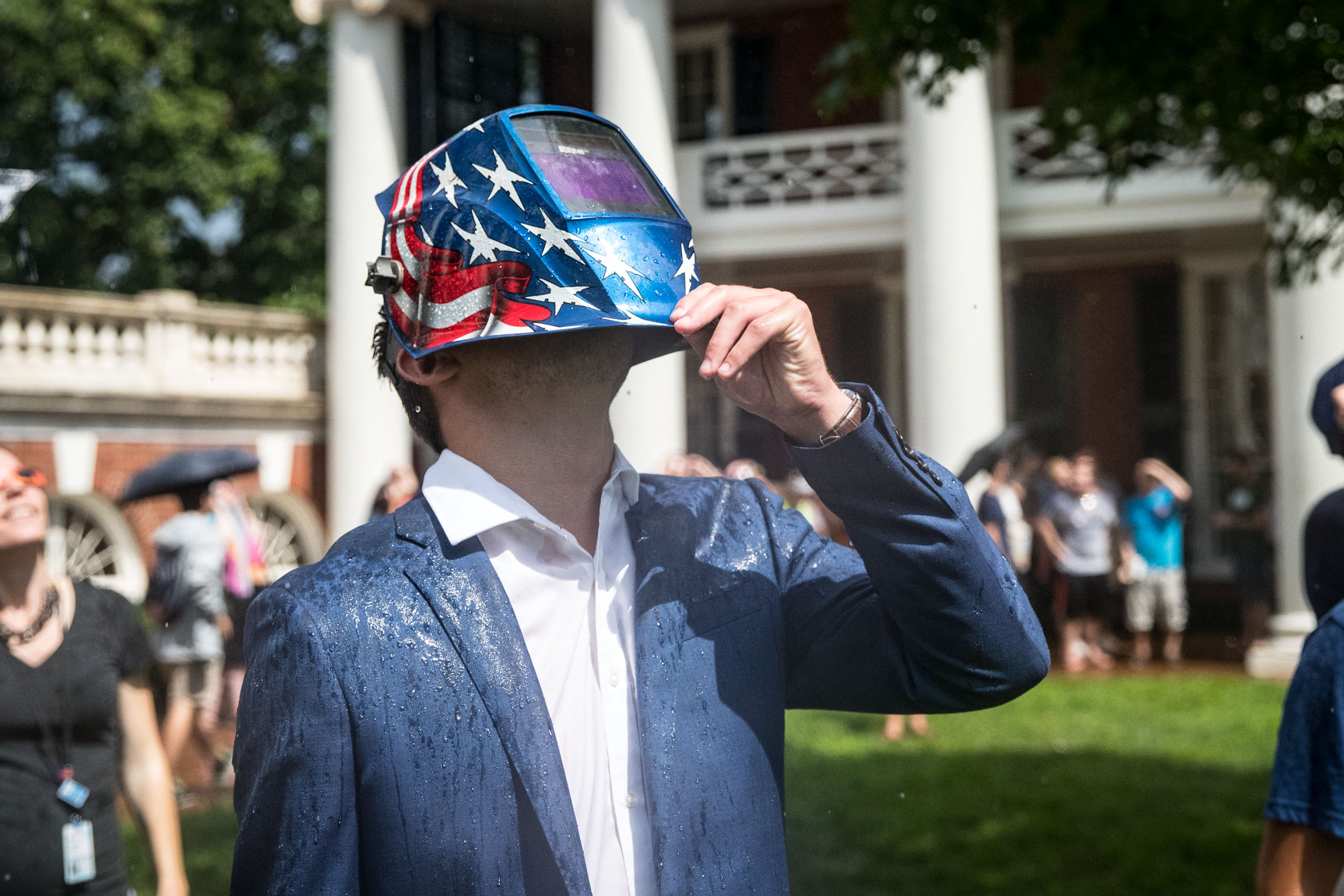
Welding masks were actually on the approved list of eye protection for the eclipse. (Photo by Sanjay Suchak, University Communications)
Just across the street from the Lawn outside of Alderman Library, another large group had gathered to watch light pass through the library’s Sunspotter. When aligned with the sun, it reflected an image of the partially obstructed sun onto a bright surface for observers. UVA Library also gave away close to 100 pairs of eclipse glasses and had more than 40 on hand for students to share throughout the afternoon.
“We knew that it would be popular, but we didn’t know it would be this popular,” said Barbie Selby, the library’s director of information services. “I’ve seen a solar eclipse before, but I was a kid. This Sunspotter actually was the surprise for me because it’s just an image, but it’s a great view. It’s so much bigger than what you see through the glasses.”
Nearby students, faculty and staff passed glasses around, each taking a turn to look at the slowly shrinking crescent of the sun.
As the moment of maximum coverage approached, rainclouds began to roll in, threatening to ruin the view. Back on the Lawn, students huddled under the colonnades and pulled out umbrellas hoping for a break in the rain.
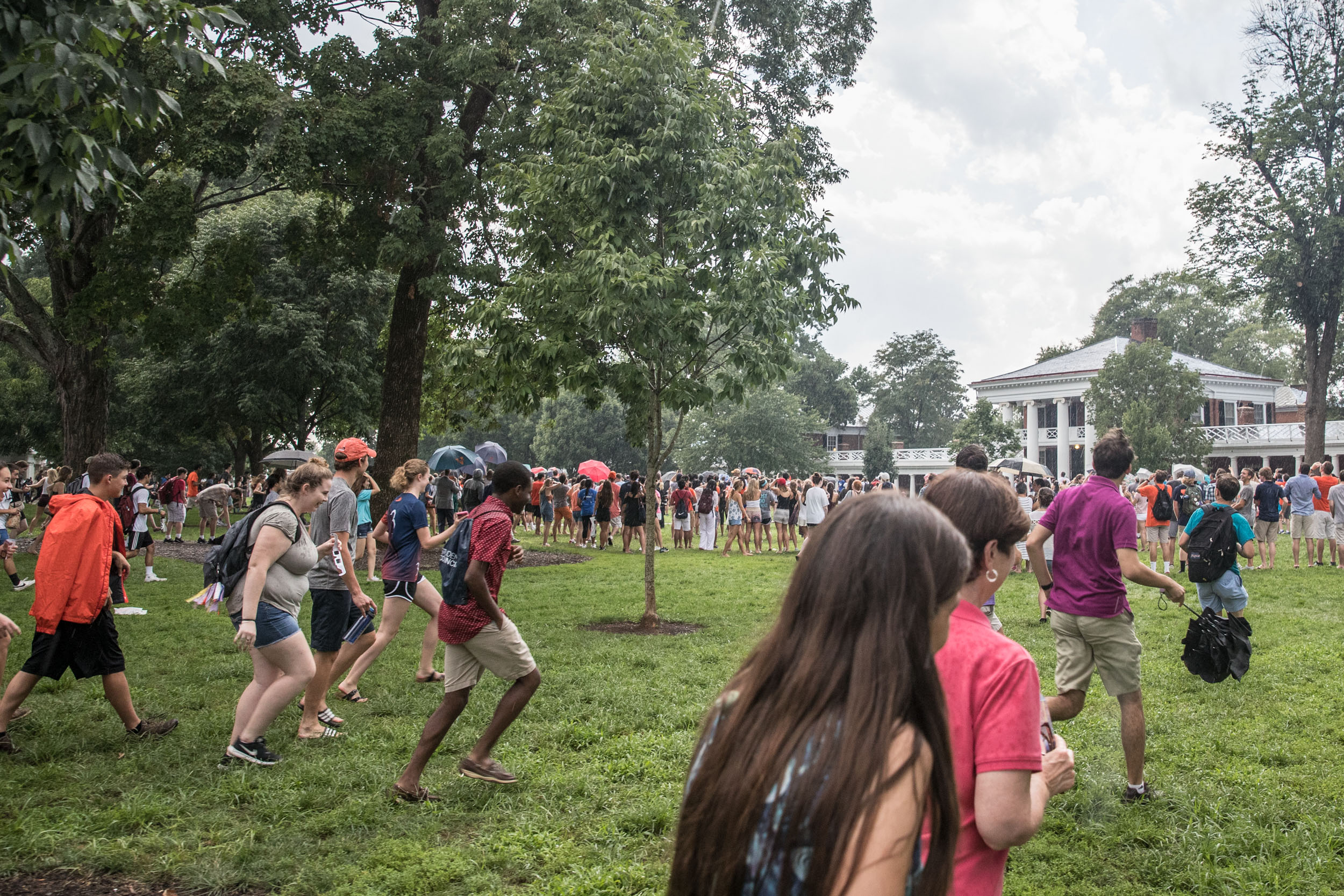
Students rush back onto the Lawn as the rain clears to view the peak of the eclipse. (Photo by Sanjay Suchak, University Communications)
Moments before the eclipse’s peak at 2:41 p.m., when the moon would provide 86 percent coverage, the brief summer storm cleared just enough for excited Wahoos to race back onto the Lawn and peer into the heavens.
Take a look below at some of the posts students and others made during the event.
Media Contact
Article Information
August 21, 2017
/content/not-quite-total-eclipse-heart-charlottesville

